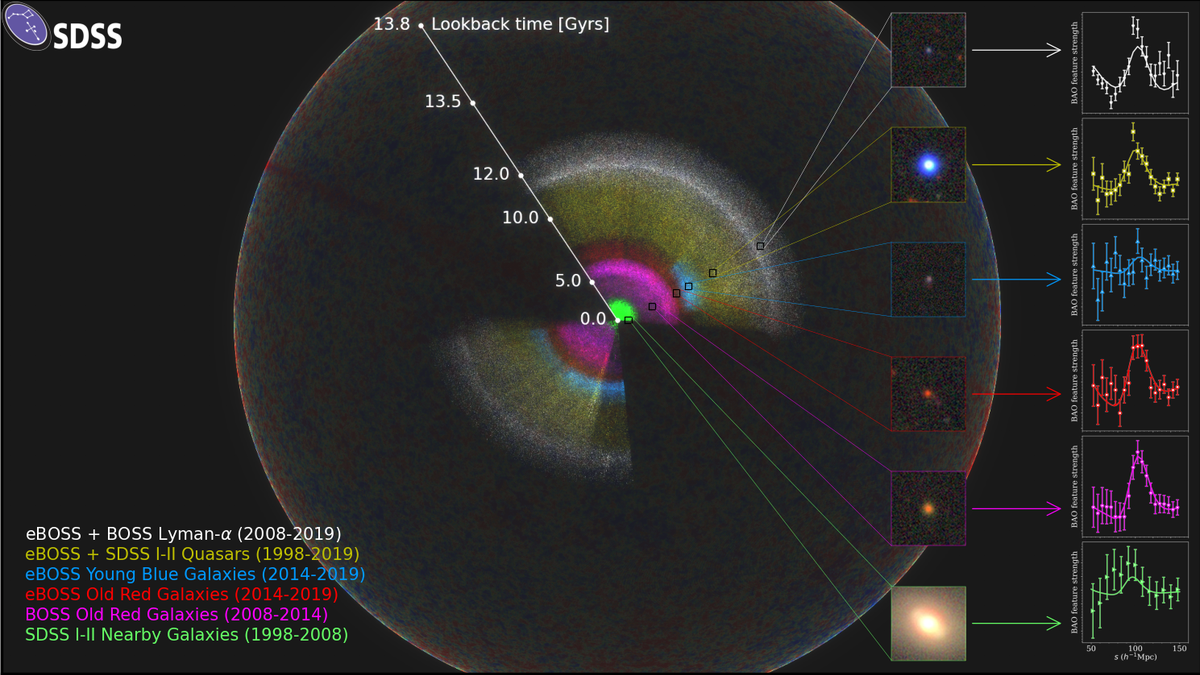50 years after Apollo 11, Neil Armstrong’s sons describe watching their dad walk on the Moon
50 years after the Apollo 11 mission, Neil Armstrong’s sons Mark and Rick describe the day when their father walked on the Moon.
Astrophysicists have created what they describe as the largest three-dimensional map of the universe ever created.
The map was released by the Sloan Digital Sky Survey (SDSS), which has been surveying the sky since 2000.
“We know both the ancient history of the Universe and its recent expansion history fairly well, but there’s a troublesome gap in the middle 11 billion years,” said University of Utah Cosmologist Kyle Dawson, who led the research team involved in the 3D map, in a statement. “For five years, we have worked to fill in that gap, and we are using that information to provide some of the most substantial advances in cosmology in the last decade.”
THERMONUCLEAR BLAST SENDS STAR HURTLING ACROSS OUR GALAXY
More than 2 billion galaxies and quasars were measured for the project, spanning 11 billion years of cosmic time. Quasars are highly active supermassive black holes.

The SDSS map is shown as a rainbow of colors, located within the observable Universe (the outer sphere, showing fluctuations in the Cosmic Microwave Background). We are located at the center of this map, according to SDSS. "The inset for each color-coded section of the map includes an image of a typical galaxy or quasar from that section, and also the signal of the pattern that the eBOSS team measures there," it explains. "As we look out in distance, we look back in time. So, the location of these signals reveals the expansion rate of the Universe at different times in cosmic history." (Image credit: Anand Raichoor (EPFL), Ashley Ross (Ohio State University) and the SDSS Collaboration)
The research harnessed data from the extended Baryon Oscillation Spectroscopic Survey (eBoss), which is one of the components of SDSS.
“Taken together, detailed analyses of the eBOSS map and the earlier SDSS experiments have now provided the most accurate expansion history measurements over the widest-ever range of cosmic time,” said Will Percival of Canada’s University of Waterloo, eBOSS’ Survey Scientist, in the statement. “These studies allow us to connect all these measurements into a complete story of the expansion of the Universe.”
SUN GETS CLOSE-UP IN HISTORIC NEW NASA PICTURES
The map reveals the "filaments and voids" in the structure in the universe, starting from a point when the universe was only about 300,000 years old. "The cosmic history that has been revealed in this map shows that about 6 billion years ago, the expansion of the Universe began to accelerate, and has continued to get faster and faster ever since," says SDSS, in the statement. "This accelerated expansion seems to be due to a mysterious invisible component of the Universe called 'dark energy,' consistent with Einstein’s General Theory of Relativity but extremely difficult to reconcile with our current understanding of particle physics."
In 2012 an international team of researchers released the results of a two-year study which said that the probability of dark energy being real is 99.996 percent, according to Space.com.
CLICK HERE TO GET THE FOX NEWS APP
In a separate project, researchers recently found evidence of a star blasting itself out of its orbit with another star in a “partial supernova” -- now hurtling across the Milky Way.
Follow James Rogers on Twitter @jamesjrogers





















